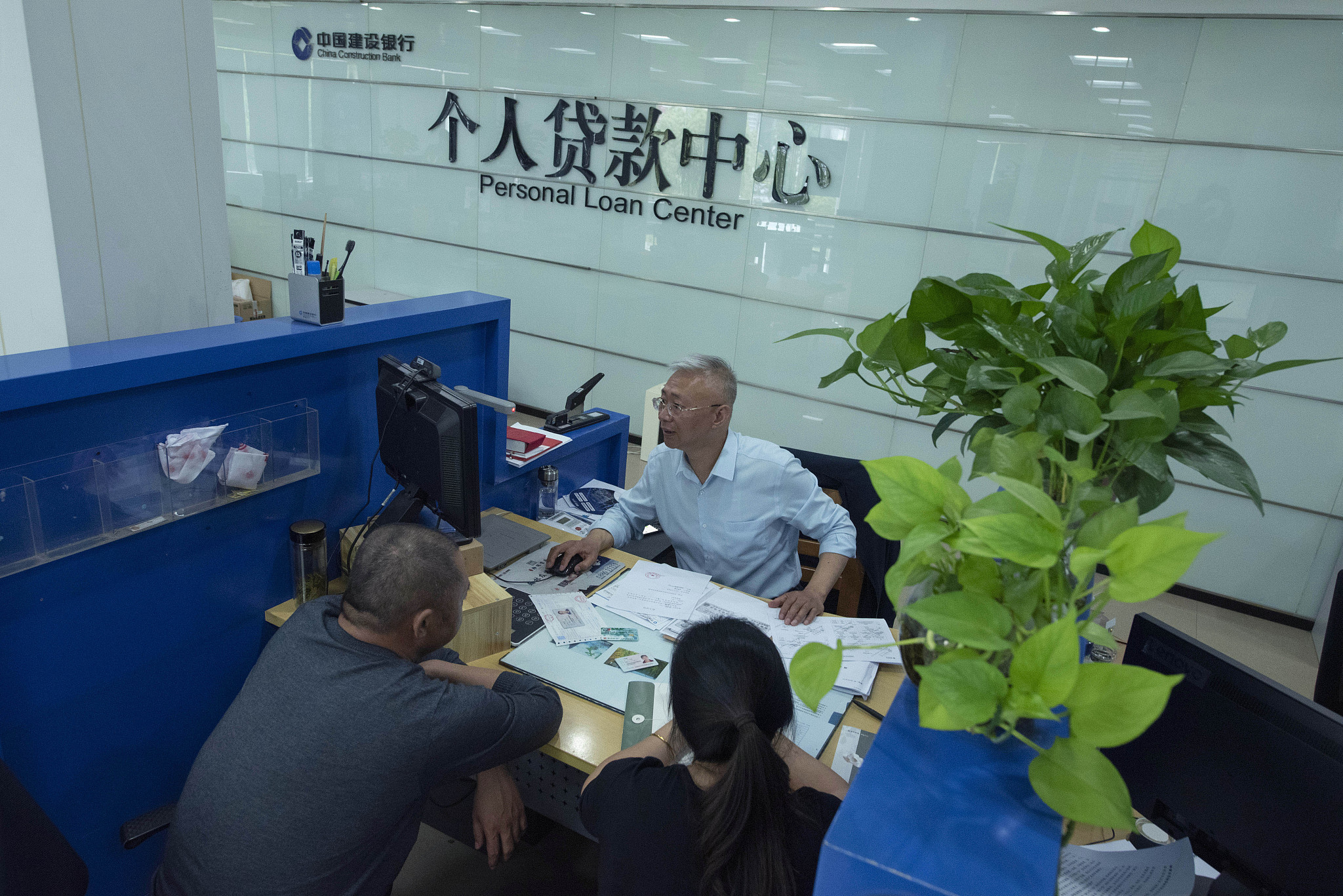 A bank clerk in Nantong, Jiangsu Province is handling individual residential housing loan business for customers on May 17. /CFP
A bank clerk in Nantong, Jiangsu Province is handling individual residential housing loan business for customers on May 17. /CFP
A bank clerk in Nantong, Jiangsu Province is handling individual residential housing loan business for customers on May 17. /CFP
Editor’s note: Bruce Pang is chief economist and head of research at JLL Greater China. The article reflects the author’s opinions and not necessarily those of CGTN. It has been translated from Chinese and edited for brevity and clarity.
The combined policy measures of abolishing the floor limit of commercial individual mortgage rates for first- and second-time home buyers nationwide, cutting the loan rates of the individual housing provident fund, and lowering the minimum down payment ratios for individuals’ commercial housing mortgages will help reduce down payment burden and costs for residents, and hence increasing their ability and willingness to purchase houses. This initiative will help foster a more favorable monetary and credit environment for the stabilization and recovery of the housing market from the demand side. It will also boost residents’ consumption capacity, effectively safeguarding and improving people’s livelihoods, actively stimulating domestic demand, and giving play to consumption’s fundamental role in driving economic growth.
Considering the necessity for policy coordination, alignment, and synchronization, it is imperative to gradually lower both existing and new mortgage rates, so as to better meet people’s essential need for a home to live in and their different demands for better housing. Meanwhile, it can curtail early repayments and illegal on-lending, driven by interest rate differentials between existing and new mortgages. Consequently, it will further enhance residents’ consumption capacity and willingness, thus further supporting the recovery and expansion of consumption.
However, it is also essential to note that merely using monetary policies such as lowering down payment ratios and mortgage rates cannot completely, effectively, and fundamentally solve the cyclical, structural, and trend-related challenges facing the real estate market.
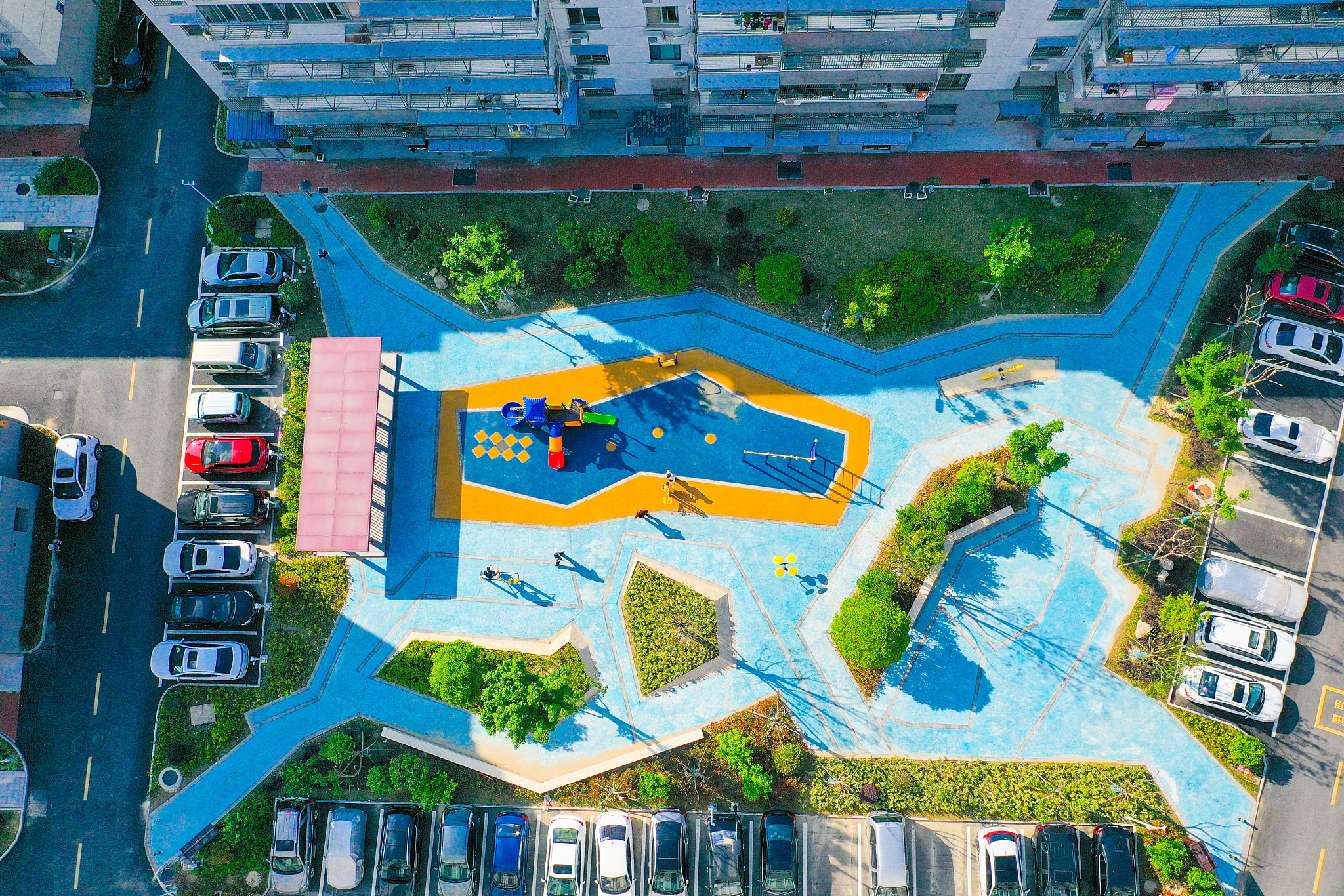 In a renovated old community, residents have fun in a newly built small amusement area, in Jiangsu Province on May 8./ CFP
In a renovated old community, residents have fun in a newly built small amusement area, in Jiangsu Province on May 8./ CFP
In a renovated old community, residents have fun in a newly built small amusement area, in Jiangsu Province on May 8./ CFP
At present, the real estate market is still in the process of determining the lowest point, continuing to make necessary adjustments. Accordingly, real estate regulation should steer clear of too simplistic and linear policy approaches aiming to “stimulate an overly frigid market and restrict for an overly heated one”. Regulators should develop a deeper understanding of the changes in supply and demand relationship, recognise the role of city-specific policies and adjust measures to local conditions, and consider both incremental and stock issues comprehensively.
Only by adjusting and optimizing local real estate policies in a step-by-step, flexible, and differentiated manner based on local conditions, making full use of policy tools both locally and nationally, and implementing long-term mechanisms for the real estate market can we expedite the stabilization and recovery of the real estate market and facilitate its sustainable development over the long run.
On the demand side, the central and local governments are expected to continue optimizing and adjusting policy measures to promote the stable operation of the real estate market and better meet residents’ reasonable housing purchase needs. Various regions, especially first-tier and some strong second-tier cities, are anticipated to gradually relax restrictive measures like purchase limits, sales restrictions, loan restrictions, and price controls. Possible directions include regional, targeted, or even comprehensive easing of purchase restrictions, adjustments to price control policies, and modifications of fiscal and tax policies such as exemption periods for transaction taxes and fees.
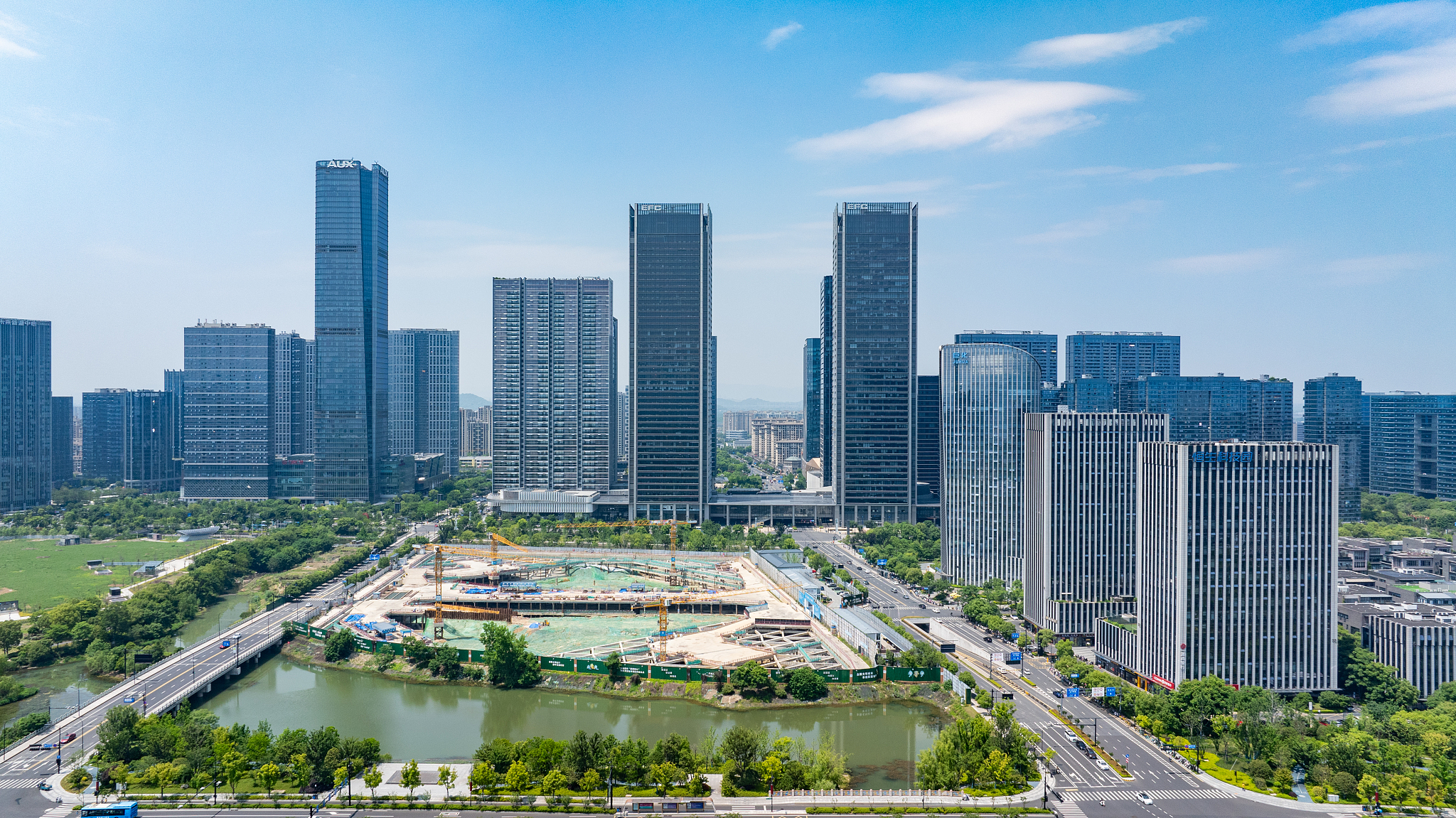 Scenery of Hangzhou Future Science and Technology City in Zhejiang Province on May 10. CFP
Scenery of Hangzhou Future Science and Technology City in Zhejiang Province on May 10. CFP
Scenery of Hangzhou Future Science and Technology City in Zhejiang Province on May 10. CFP
On the supply side, plans are expected to continue to meet the reasonable financing needs of quality real estate enterprises, regardless of their ownership. Support will be given to such enterprises that focus on their primary business, comply with laws and regulations, boast good credentials, maintain stable operations, and exhibit development potential and some systemic significance. This move will help them improve their liquidity, broaden access to financing channels, expand the fund use scope, and enhance the fund use efficiency. By better connecting “asset activation” with “debt continuation”, “equity supplementation”, and “expectation enhancement”, we can help quality real estate enterprises with markets, prospects, and competitiveness yet face temporary difficulties improve their credit, mitigate project credit and spillover risks, and reduce financing costs. The move will help drive cash flow conditions, investment activities, and mergers and acquisitions in the real estate industry back onto a trajectory of normal development, thus accelerating the market-driven resolution of risks encountered by real estate enterprises in a steady and orderly manner, and promoting the stable and healthy development of the real estate market.
In addition, we anticipate that the central and local governments may consider various financing mechanisms such as the issuance of special treasury bonds and special-purpose bonds, the provision of low-interest loans and refinancing by financial institutions, the establishment of special funds, financial support for platform companies’ acquisition using accrued land premium funds from centrally supplied residential lands, and the generation of housing sales through rent-to-own models for co-owned housing. These measures aim to reduce inventory and ensure the availability of government-subsidized housing by repurchasing unsold new houses, promoting the sales of existing second-hand houses, revitalizing and renovating non-residential properties, acquiring land projects, and facilitating the construction and sales of government-subsidized housing. This will foster a virtuous circle between commercial and government-subsidized housing. It can not only activate stock and reduce inventory but also provide robust and effective support for the supply of public rental houses offered by the government.
Overall, the real estate industry is set poised for the transition from an era of incremental change to one of stock management, adjusting to changes in supply and demand relationship and long-term trends. The industry will shift from the expansion in total volume to a multifaceted strategy encompassing stock transformation, inventory reduction, digestion, and incremental quality improvement, adjustment, and optimization. It is expected that the three major key construction projects of government-subsidized housing, renovation of urban villages, and dual-use public infrastructure that can accommodate emergency needs, will be combined with the optimization and adjustment of regulation policies for the real estate industry, becoming a new driving force for optimizing the structure of the real estate industry, and building a new paradigm for the sector’s development.



 A bank clerk in Nantong, Jiangsu Province is handling individual residential housing loan business for customers on May 17. /CFP
A bank clerk in Nantong, Jiangsu Province is handling individual residential housing loan business for customers on May 17. /CFP  In a renovated old community, residents have fun in a newly built small amusement area, in Jiangsu Province on May 8./ CFP
In a renovated old community, residents have fun in a newly built small amusement area, in Jiangsu Province on May 8./ CFP  Scenery of Hangzhou Future Science and Technology City in Zhejiang Province on May 10. CFP
Scenery of Hangzhou Future Science and Technology City in Zhejiang Province on May 10. CFP 
 An aerial view of the Shanghai Synchrotron Radiation Facility in east China’s Shanghai Municipality. /CMG
An aerial view of the Shanghai Synchrotron Radiation Facility in east China’s Shanghai Municipality. /CMG  An aerial view of the Shanghai Synchrotron Radiation Facility in east China’s Shanghai Municipality. /CMG
An aerial view of the Shanghai Synchrotron Radiation Facility in east China’s Shanghai Municipality. /CMG  An internal view of the Shanghai Synchrotron Radiation Facility in east China’s Shanghai Municipality. /CMG
An internal view of the Shanghai Synchrotron Radiation Facility in east China’s Shanghai Municipality. /CMG 

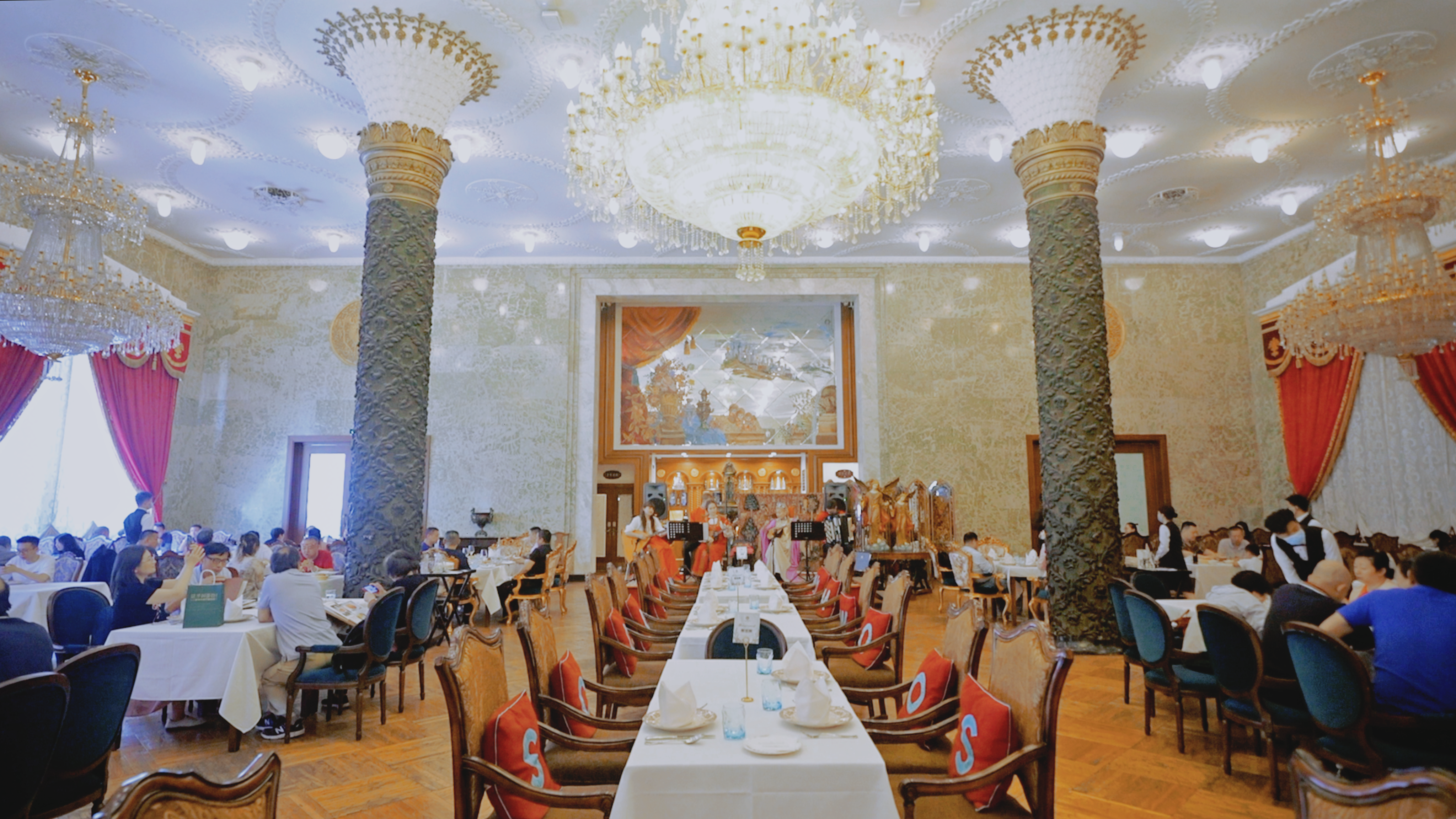 The dining hall of the Moscow Restaurant in Beijing /CGTN
The dining hall of the Moscow Restaurant in Beijing /CGTN  Russian dishes are served at Moscow Restaurant in Beijing. /CGTN
Russian dishes are served at Moscow Restaurant in Beijing. /CGTN 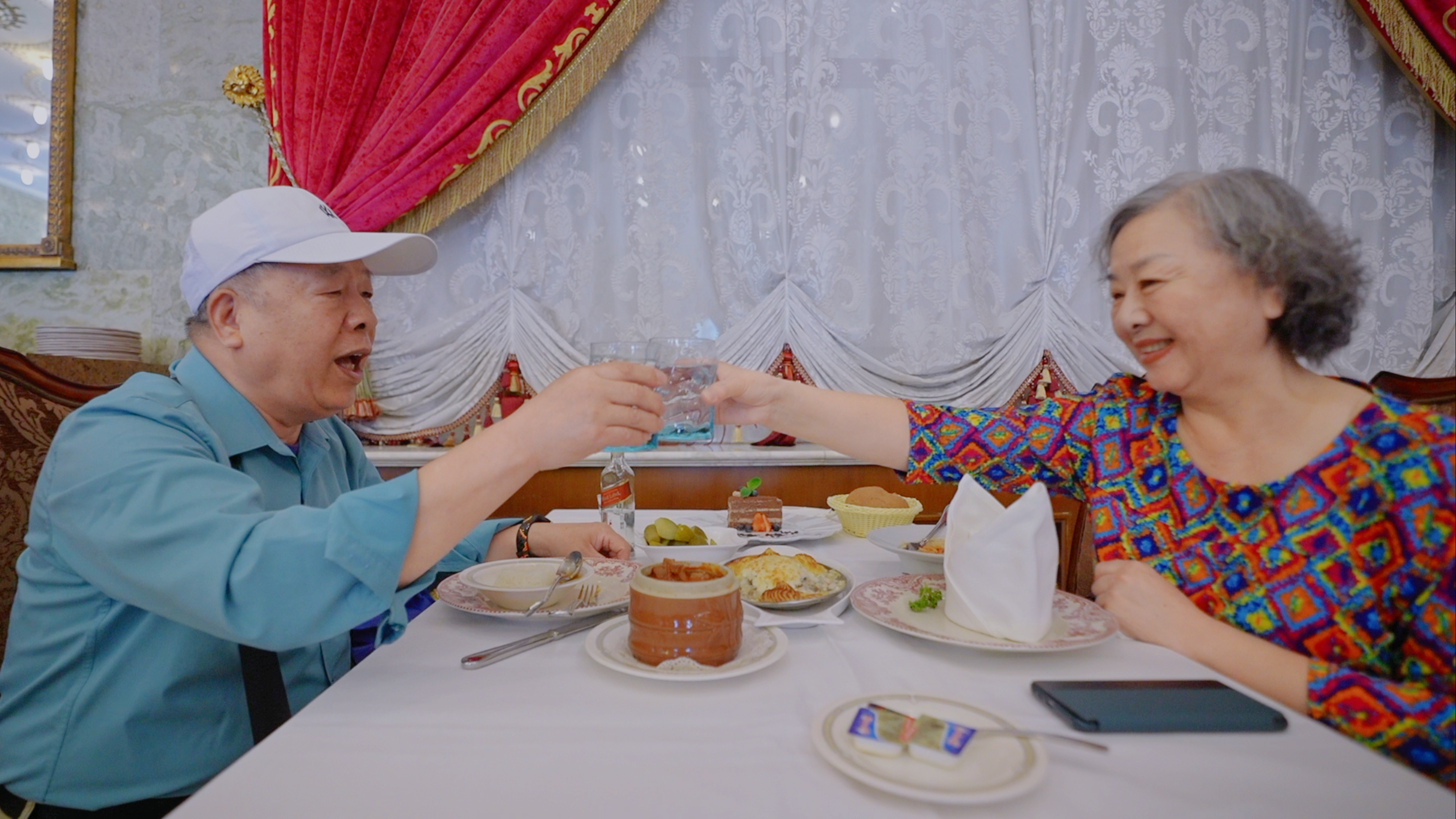 Customers celebrate a wedding anniversary. /CGTN
Customers celebrate a wedding anniversary. /CGTN  Russian performers play instruments. /CGTN
Russian performers play instruments. /CGTN 
 Chinese white dolphins in Leizhou Bay, Zhanjiang City, Guangdong Province, south China, May 16, 2024. /CFP
Chinese white dolphins in Leizhou Bay, Zhanjiang City, Guangdong Province, south China, May 16, 2024. /CFP  Chinese white dolphins in Leizhou Bay, Zhanjiang City, Guangdong Province, south China, May 16, 2024. /CFP
Chinese white dolphins in Leizhou Bay, Zhanjiang City, Guangdong Province, south China, May 16, 2024. /CFP  A Chinese white dolphin in the Leizhou Bay, Zhanjiang City, Guangdong Province, south China, May 16, 2024. /CFP
A Chinese white dolphin in the Leizhou Bay, Zhanjiang City, Guangdong Province, south China, May 16, 2024. /CFP  Chinese white dolphins in Leizhou Bay, Zhanjiang City, Guangdong Province, south China, May 16, 2024. /CFP
Chinese white dolphins in Leizhou Bay, Zhanjiang City, Guangdong Province, south China, May 16, 2024. /CFP  Chinese white dolphins in Leizhou Bay, Zhanjiang City, Guangdong Province, south China, May 16, 2024. /CFP
Chinese white dolphins in Leizhou Bay, Zhanjiang City, Guangdong Province, south China, May 16, 2024. /CFP 
 South Sudan on Wednesday launched a five-year United Nations-backed project to build the resilience of vulnerable communities to the effects of climate change while restoring ecosystems. /CFP
South Sudan on Wednesday launched a five-year United Nations-backed project to build the resilience of vulnerable communities to the effects of climate change while restoring ecosystems. /CFP  South Sudan’s Minister of Environment and Forestry said climate change is currently a major threat to the world, and South Sudan is among the countries in the region most affected. /CFP
South Sudan’s Minister of Environment and Forestry said climate change is currently a major threat to the world, and South Sudan is among the countries in the region most affected. /CFP 
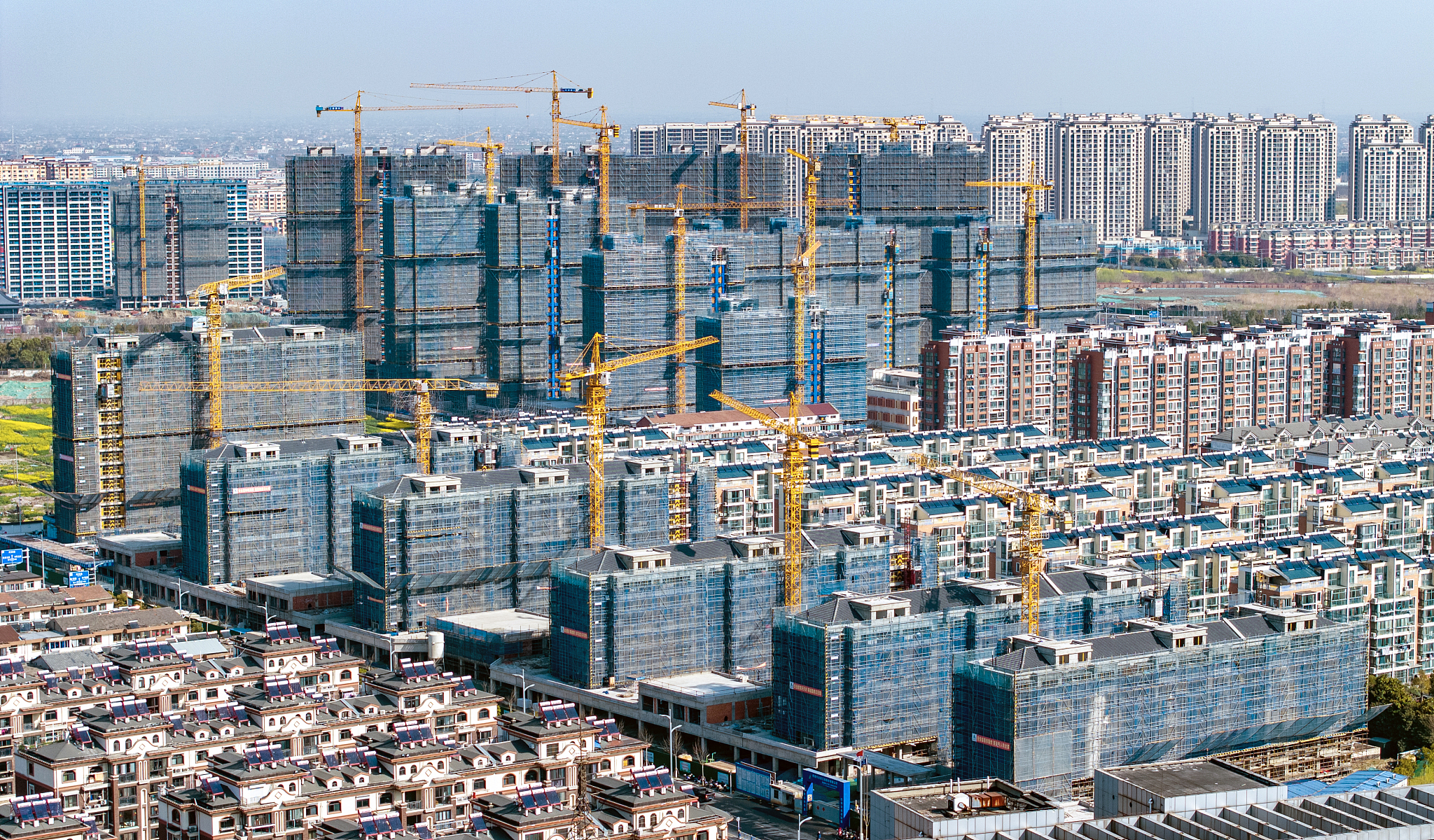 A government-subsidized housing project is under construction in Nantong City, east China’s Jiangsu Province, March 22, 2024. /CFP
A government-subsidized housing project is under construction in Nantong City, east China’s Jiangsu Province, March 22, 2024. /CFP 
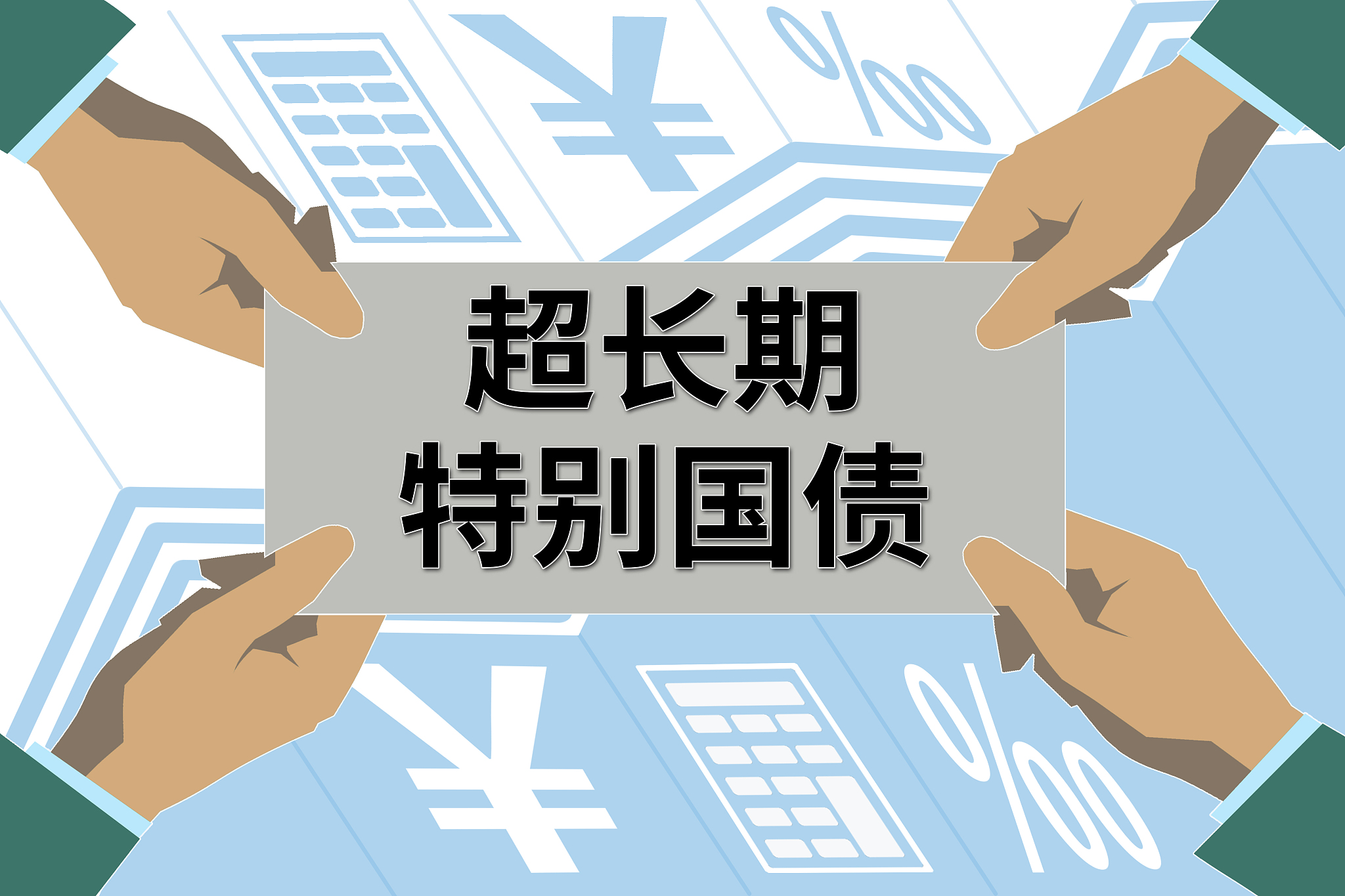 An image depicting the Chinese phrase for ultra-long-term treasury bonds. /CFP
An image depicting the Chinese phrase for ultra-long-term treasury bonds. /CFP  Consumers purchasing home appliances in Shanghai, China, May 12, 2024. /CFP
Consumers purchasing home appliances in Shanghai, China, May 12, 2024. /CFP  People shopping in an outdoor mall in Beijing, China, May 3, 2024. /CFP
People shopping in an outdoor mall in Beijing, China, May 3, 2024. /CFP 
